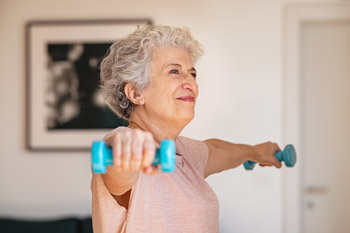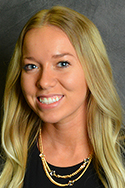Crack the Code: Osteoporosis, Exercise, and Daily Habits for an Unbreakable Future
by April Hagemeister
December 2023
The dreaded sound: the snap of a hip, arm, or backbone breaking. For North Dakota Medicare patients, nearly 25,000 new osteoporotic fractures went on record in 2016, according to a National Osteoporosis Foundation report. Bones break for many reasons, but a preventable reason is when bones are too thin, called osteoporosis. Although young people are sometimes affected, the thinning naturally occurs as the body ages and happens in 20% of women and 5% of men.
Knowing about healthy bones is important to better understand why thin bones can be a problem. Besides the obvious fact that bones hold skin and muscle, they have other duties like housing marrow where blood cells are manufactured. They also hold minerals like calcium and phosphate. Bones are very busy, constantly breaking down and rebuilding. In young adults, those processes are balanced. However, the balance tips in other age groups. In children, bones focus on growing. In older adults, just the opposite occurs and bones become thinner and weaker.
Older, thinner, and weaker bones are at a higher risk of breaking. Yet, aside from age, there are other important factors that add to thinness and weakness: diet, activity level, medications, family history, and menopause. Some factors can be changed, such as diet and activity level, whereas other factors are out of someone's control, like family history and being female.
How is osteoporosis diagnosed? The U.S. Preventive Services Task Force (USPSTF) recommends women 65 years and older be tested. Sometimes medical professionals recommend screening at a younger age if certain risk factors are present. On the other hand, for men, there is no recommended age to start testing unless other risk factors are in play, such as a history of fractures, decreased height, certain medical conditions, or taking certain medications.
Screening is typically done with a DEXA, or dual-energy x-ray absorptiometry, scan. This measures bone density by sending x-ray beams through the bones. It's typically a short procedure that only takes about 15-20 minutes and is usually recommended to be done at least every two years.
When it comes to osteoporosis prevention, lifestyle changes made at any time can make a difference. One change is to make sure to get adequate calcium and vitamin D intake. The USPSTF recommends 400 IU of vitamin D and 1000 mg of calcium daily for adults. Dairy products are a great source of these nutrients. However, if dairy isn't a part of someone's diet, there are several affordable supplement options available, like a daily multivitamin tablet.
 Another prevention
recommendation is regular exercise. Again, it's never too
late – or too early – to start.
Research shows that weight-bearing activities –
meaning exercises that are done in a standing position
rather than sitting in a chair or lying down in bed
– that get your heart pumping are not only
great for heart health, but also important to keeping
bones strong. The current recommendation is 150 minutes
of moderate-intensity physical activity per week. This
includes walking, rowing, jogging, cycling,
weightlifting, and resistance training, as some examples.
When trying to make exercise a regular routine, start
with small goals and gradually build up to the
recommended goal of 150 minutes. Every minute counts as a
step in the right direction.
Another prevention
recommendation is regular exercise. Again, it's never too
late – or too early – to start.
Research shows that weight-bearing activities –
meaning exercises that are done in a standing position
rather than sitting in a chair or lying down in bed
– that get your heart pumping are not only
great for heart health, but also important to keeping
bones strong. The current recommendation is 150 minutes
of moderate-intensity physical activity per week. This
includes walking, rowing, jogging, cycling,
weightlifting, and resistance training, as some examples.
When trying to make exercise a regular routine, start
with small goals and gradually build up to the
recommended goal of 150 minutes. Every minute counts as a
step in the right direction.
“Cracking the code” to keep bones strong also includes regularly checking in with a physician. Until then, good diet and exercise habits are important. Making and maintaining healthy habits are key to keeping strong bones. Even small changes can lead to a big difference in bone health and to an “unbreakable” future!
This article also appeared in the January 16, 2024 issue of the Devils Lake Journal.
About the Author
 April Hagemeister is a third-year medical
student at the University of North Dakota School of
Medicine & Health Sciences. She was selected as the
Devil's Lake participant for the school's ROME program,
or Rural Opportunities in Medical Education. The program
focuses on teaching student doctors the importance of
rural newspapers as a way to share health information. As
a future rural healthcare leader, Hagemeister has written
this column to provide health information for her ROME
community. The information is not for diagnosis or
treatment and should not be used in place of previous
medical advice provided by a licensed provider.
April Hagemeister is a third-year medical
student at the University of North Dakota School of
Medicine & Health Sciences. She was selected as the
Devil's Lake participant for the school's ROME program,
or Rural Opportunities in Medical Education. The program
focuses on teaching student doctors the importance of
rural newspapers as a way to share health information. As
a future rural healthcare leader, Hagemeister has written
this column to provide health information for her ROME
community. The information is not for diagnosis or
treatment and should not be used in place of previous
medical advice provided by a licensed provider.
